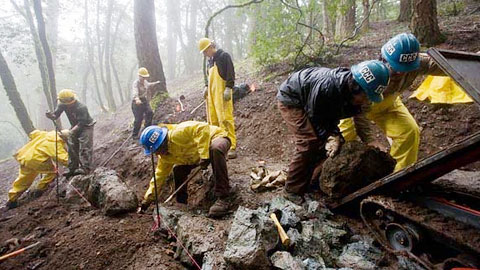By Mike Conrad, Aptos La Selva Fire Protection District
The first thing you need to determine is how close is the fire? How much time do you have? If the fire is some distance away and you have been made aware of it by local news reports or neighbors, start thinking about what you will need to do if your are required to evacuate. Review your evacuation checklist; make sure your emergency supply kit is in your vehicle. Round up your pets so you have quick access to them if you need to evacuate.

If you receive a notice of voluntary evacuation, be sure the above items have been dealt with. Plus, put your plan in place for the removal of your large animals. Make sure you have gathered your go kit that contains your vital papers and documents. Load those few, must-have items into your vehicle. Seal attic vents and crawlspace vents with precut plywood if it’s safe for you to do.
Your home is now as ready as it can be to withstand a wildland fire. Your preparedness and providing defensible space along with pre-evacuation steps can make a huge difference in the safety of your property. Before driving away, please don’t turn on sprinklers in your lawn or on your roof. This will often greatly reduce water pressure and can interfere with firefighting operations.
If you are given a mandatory evacuation notice, law enforcement may also provide you with a time frame like 10 or 20 minutes. Prioritize the evacuation list and concentrate on doing only the most important items according to the timeline provided. Always follow evacuation recommendations often we see people who wait until the very last second to leave and when they finally do, especially on narrow roads, they impede access for fire fighting equipment.
We will always try to provide you with as much lead time as possible. However, each wild fire is different and can spread with incredible speed so if at any point you feel you are no longer safe, EVACUATE.
•••
For more information please visit the Cal Fire website at www.readyforwildfire.org